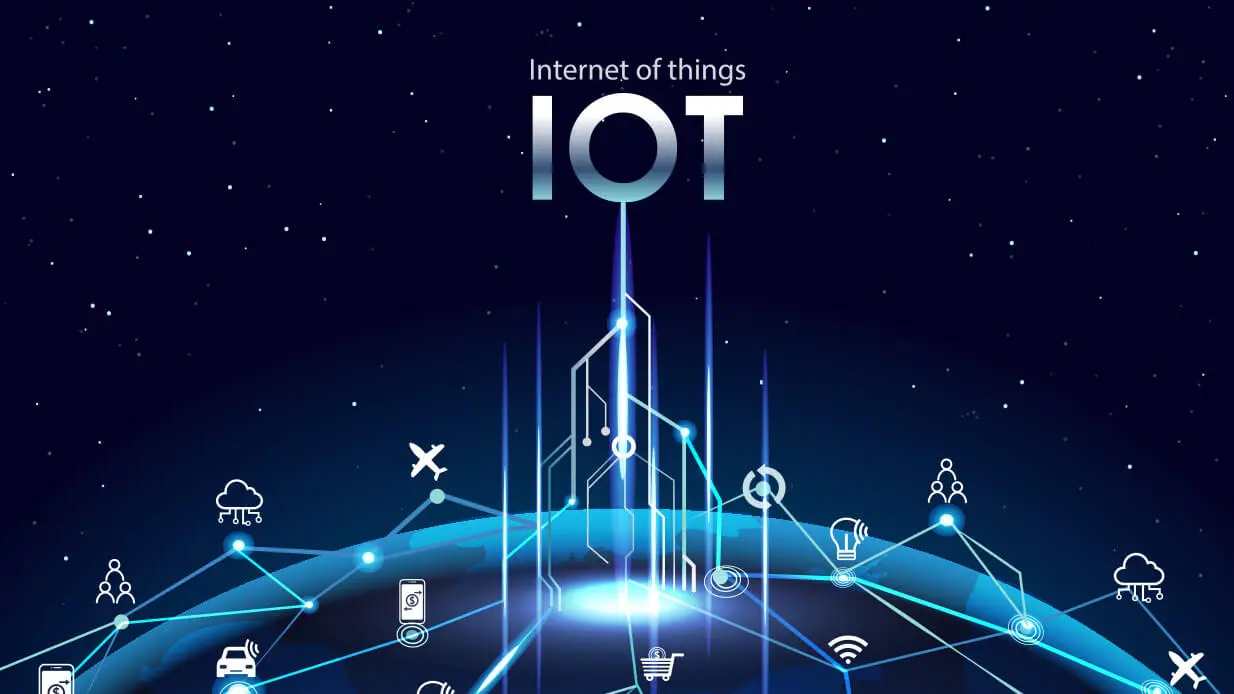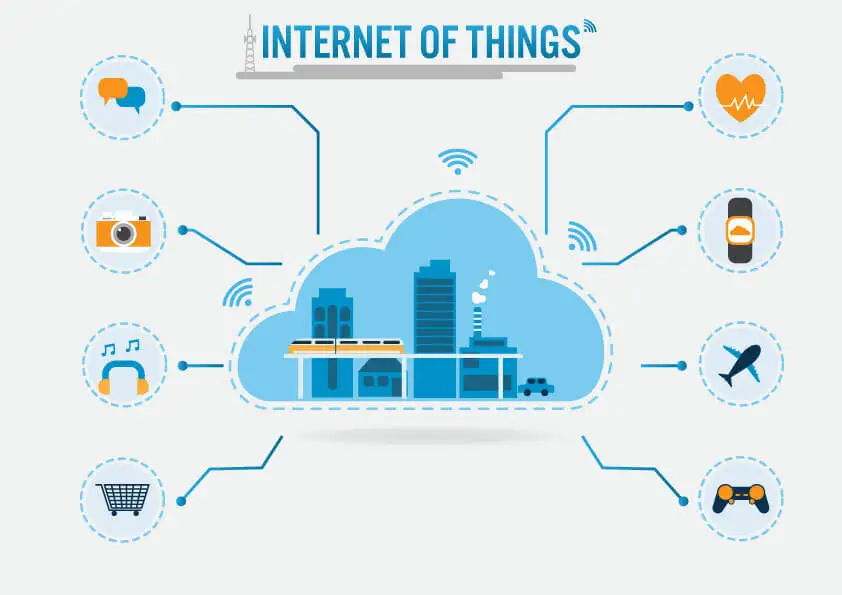Explore The 10 Best Main Characteristics of IoT (Internet of Things)
When we think of the technology of the future there are many types of technologies that come to our mind. & among them, the Internet of Things is one of a few which secures its place as a sign of connectivity & innovation. But what exactly is it, what are the main characteristics of IoT? We’ll break down its key features in an easy to understand manner in this article. So that you could easily remember these concepts for longer periods of time.

Definition of IoT?
Internet of Things (IoT) is a network of physical devices (such as vehicles, appliances) that are connected with sensors, software, & network connectivity.
These devices exchange data with each other. They perform these actions through various communication channels. It creates a complete system that improves overall convenience in our daily lives. More importantly, this technology converts everyday objects into intelligent, data gathering devices that contribute to a more interconnected & smarter world.
Why Does IoT Is A Critical Topic Today?
The IoT has an essential impact on various industries, economies, and daily life. It is expected that this technology will reshape the future and the way businesses interact with technology. The use of this technology could also improve economic growth. It has a key impact on digital transformation for industries like agriculture, transport, retail, and manufacturing.
Real-timeThe use of this technology could achieve real-time data analysis and operational efficiency. Nowadays, smart irrigation systems are being used in farming that improve water use. It ultimately enhances crop yields. Besides this, global challenges like sustainability, urbanization, and climate change could also be addressed. IoT is being used to manage things like traffic, reduce pollution, and improve other public services. Whether it is patient care via remote monitoring or any other thing, it is being immersed in our lives effortlessly. It is expected to grow further in the coming year of 2025 and further.
10 Main Characteristics of IoT (Internet of Things)
Now, let’s discuss the key features of this technology that set it apart from other types of technologies in the same category. Here is a general list of them. We have also discussed them in more detail below.
- Connectivity
- Sensors & Actuators
- Data Collection & Analysis
- Remote Monitoring & Control
- Automation
- Scalability
- Interoperability
- Security
- Energy Efficiency
- Realtime Processing

1. Connectivity
The very first & most important iot key features is the feature of connectivity. These devices are designed to communicate with each other smoothly. This type of connectivity allows devices to share information all while working together. It creates a network of smart devices that don’t disturb each other in the network. For a moment, you can imagine your thermostat communicating with your smartphone to adjust the temperature according to your will. This interconnectedness is what makes this technology so powerful.
2. Sensors & Actuators
The IoT ecosystem has two other important components. These are Sensors & actuators. Both of them work together. Sensors collect data from the environment. This data might include temperature, humidity, or motion. After that, actuators perform different types of actions based on the data provided by sensors. For example, a smart refrigerator which has sensors installed in it can detect when you’re running low on groceries. This type of refrigerator might have Weight sensors or RFID (Radio-Frequency Identification) Tags. After that, it can automatically place an order to the selected grocery store.
Examples of Sensors are:
- Temperature Sensor
- Proximity Sensor
- Light Sensor (Photocell)
Examples of Actuators are:
- Motor
- Solenoid
- Speaker
3. Data Collection & Analysis
IoT devices can be used to generate large amounts of data. This data can help you with its valuable insights for future decisions.In this process, relevant information is collected from sensors. After that analysis of this data is performed to make sense. This process helps in understanding patterns, making predictions, & optimizing various aspects of our lives. It is helpful in many industries such as energy consumption & healthcare.
4. Remote Monitoring & Control
One of the most significant features of IoT is the ability to monitor & control devices remotely. These devices allow for real time interaction with connected devices from anywhere with an internet connection. You can literally check the security cameras at home from your smartphone or adjust the lighting in your living room while you’re away by using a smart Internet of Things device.
Some of the key industries where remote monitoring & control find extensive applications include:
- Energy Sector
- Oil & Gas Industry
- Manufacturing & Industrial Processes
- Telecommunications
- Agriculture
5. Automation
Automation is the magic touch that makes IoT so convenient. You can use these devices to automate tasks without direct human intervention. & for this process they use the data they collected/analyzed from other devices. For example, another great example of the wonders of this technology is the smart homes. Your system can automatically adjust lighting, heating, & cooling systems based on your habits & preferences all by the process of automation.
Voice assistants like Amazon Alexa or Google Assistant in your smart home makes it easy to interact with devices. This not only adds comfort but also helps save energy by smartly controlling things like heating & lighting. Security gets a boost with smart cameras & sensors that can alert you to anything unusual. In simple words, this technology has made life so much easier.
6. Scalability
Scalability is another important characteristic of the Internet of Things. This feature allows the network to grow & modify easily. It doesn’t matter if you’re adding a new sensor to your smart home or expanding an industrial IoT network. The feature of scalability will help you in the long term. It also helps the system to handle the increased load without compromising performance. It also helps in increased reliability.
7. Interoperability
Interoperability is another important characteristic of IoT. The term means the ability of different devices or systems to work together smoothly. Interoperability helps to create a standardized environment where various components can communicate, share data, & operate collaboratively. For example, a smart thermostat should be able to communicate with various HVAC systems. This provides a hasslefree user experience & the manufacturer of the device does not matter.
8. Security
Security in IoT (Internet of Things) means the measures or protocols that are implemented to safeguard the connected devices, networks, & users data from potential cyber threats. As you know this technology is becoming more & more involved in different parts of our lives. Therefore, the security of data of users has become mandatory. But to avoid these dangers it also gives you the facility to implement solid authentication, encryption, & access control measures to protect your data.
You can use strong passwords, protect data with encryption, & regularly update device software. You can also keep the network safe by dividing it & watching for unusual activities. Only allow authorized users & devices to access & control IoT gadgets. In simple words, you can use simple & secure ways for devices & people to prove who they are. These steps work together to make sure IoT devices & systems stay safe & reliable.
9. Energy efficiency
Energy efficiency in the Internet of Things is a very important factor. It helps in optimizing the power consumption of connected devices & systems. Moreover, these key features of iot are what makes the overall process environment friendly. It is also important for the sustainability of these devices. So, if you optimize power consumption & utilize energy saving features then IoT devices can operate more efficiently throughout their lifespan.
10. Realtime Processing
Real Time processing is what makes this such a success in the health sector. The collected data is analyzed & acted upon instantaneously. This characteristic of IoT is what makes it a lifesaving technology. You can monitor patient vitals in healthcare or manage traffic in a smart city. This realtime capability processing takes the effectiveness of its applications to a whole new level.
In summary, the key characteristics of iot lay the foundations for a smart & interconnected world. This technology is changing how we engage with our environment with its smooth connections, sensors gathering data, & automated processes. So as we witness this tech revolution, it will be very beneficial for us to understand these fundamental characteristics of internet of things. It helps us make the most of the IoT systems in our daily life activities.
Final Thoughts!
In summary, the key characteristics of iot lay the foundations for a smart & interconnected world. This technology is changing how we engage with our environment with its smooth connections, sensors gathering data, & automated processes. So as we witness this tech revolution, it will be very beneficial for us to understand these fundamental characteristics of internet of things. It helps us make the most of the IoT systems in our daily life activities.
FAQ’s
IoT stands for the Internet of Things. You can imagine it as a type of technology in which different devices communicate with each other over the internet. They share information and work together.
These devices use various communication technologies, such as WiFi, Bluetooth, & cellular networks, to establish connections & share information.
Sensors in IoT devices collect real time data from the environment.It allows devices to monitor & respond to changes in their surroundings.
IoT devices perform tasks automatically based on the data they collect. It reduces the need for human intervention.
Well, IoT devices make our lives way better. They make things work more smoothly, being more convenient, and helping us make smarter decisions. It does this by giving us useful information about our homes, health, and transportation.
To keep IoT data safe, we use special codes to scramble it (encryption), make sure only the right devices can use it (authentication), and control who gets to see it (access control). This helps protect important information from being seen or used by people who shouldn't have access.
Challenges include interoperability issues, standardization concerns, & the need for cybersecurity measures to address potential online vulnerabilities.
IoT raises privacy concerns as the constant collection & sharing of data may compromise individuals' personal information. It's important to implement privacy safeguards & regulations.
Edge computing in IoT helps us to handle data closer to where it comes from, like on the device or right at the edge of the network. Due to this, things work faster by cutting down on delays and using less internet space for better and more efficient data management.
After understanding the basics of IoT & selecting devices that are in line with personal needs & preferences, you can integrate this technology into your routines for a more connected & intelligent lifestyle.


